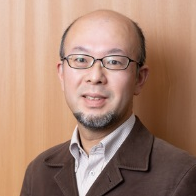Bioceramics and Related Hybrid Materials for Tissue Reconstruction
A special issue of Materials (ISSN 1996-1944). This special issue belongs to the section "Biomaterials".
Deadline for manuscript submissions: closed (31 August 2021) | Viewed by 8139
Special Issue Editor
Special Issue Information
Dear Colleagues,
Bioceramics have been clinically used for repairing hard tissues such as bone, teeth, and joints because they have a high biocompatibility to bond to bone. Hybridization, such as bioceramic coating on metal implants for artificial joints to impart osteoconduction and the improvement of mechanical properties by bioceramics-polymer hybrids is also extensively promoted. In the future, we expect that bioceramics and hybrid materials with a highly hierarchical structure through biomimetic processes that mimics the process of tissue formation in the living body, and novel biological functions including as antibacterial properties and sensing/imaging properties will be developed. In this Special Issue, we are looking for papers on the latest achievements in bioceramics and related hybrid materials.
Prof. Toshiki Miyazaki
Guest Editor
Manuscript Submission Information
Manuscripts should be submitted online at www.mdpi.com by registering and logging in to this website. Once you are registered, click here to go to the submission form. Manuscripts can be submitted until the deadline. All submissions that pass pre-check are peer-reviewed. Accepted papers will be published continuously in the journal (as soon as accepted) and will be listed together on the special issue website. Research articles, review articles as well as short communications are invited. For planned papers, a title and short abstract (about 100 words) can be sent to the Editorial Office for announcement on this website.
Submitted manuscripts should not have been published previously, nor be under consideration for publication elsewhere (except conference proceedings papers). All manuscripts are thoroughly refereed through a single-blind peer-review process. A guide for authors and other relevant information for submission of manuscripts is available on the Instructions for Authors page. Materials is an international peer-reviewed open access semimonthly journal published by MDPI.
Please visit the Instructions for Authors page before submitting a manuscript. The Article Processing Charge (APC) for publication in this open access journal is 2600 CHF (Swiss Francs). Submitted papers should be well formatted and use good English. Authors may use MDPI's English editing service prior to publication or during author revisions.
Keywords
- bioceramics
- hybrid materials
- hard tissue repair
- biomimetic process
- sensing
- imaging
- antibacterial properties
- implant materials
- tissue engineering
- dental application






